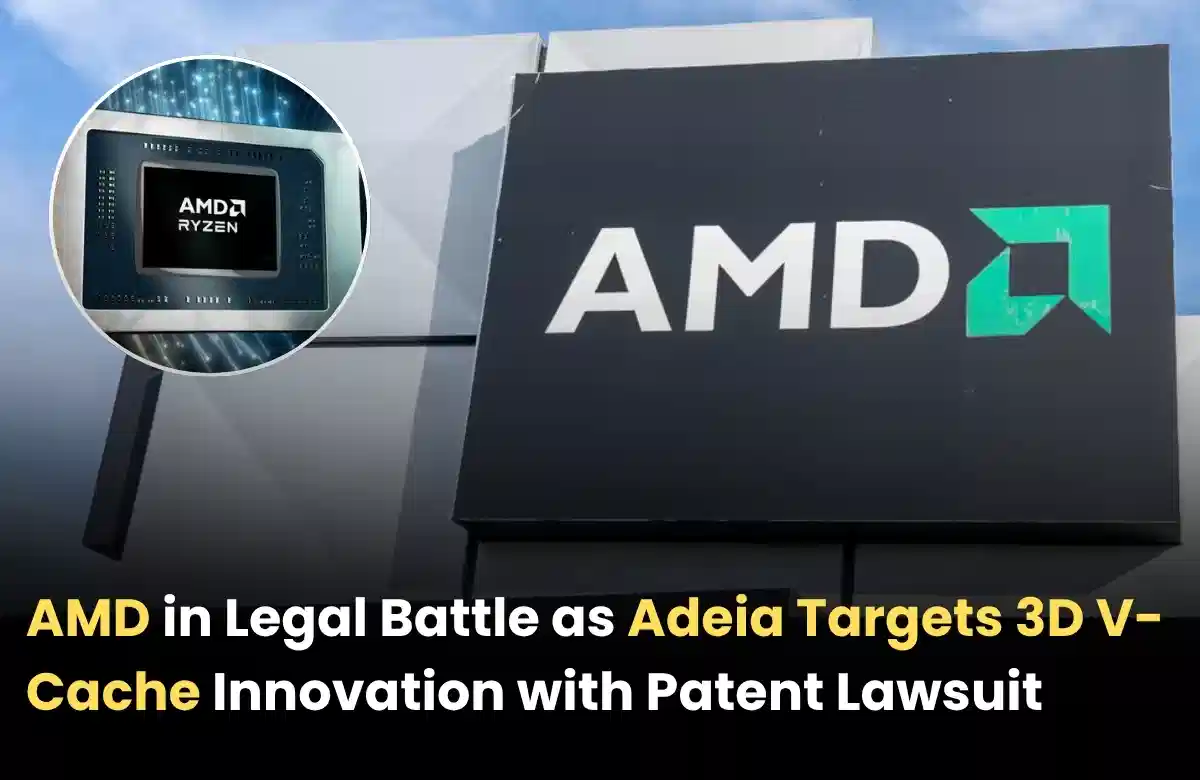
Patent infringement cases have been making waves across the tech world lately — especially those involving cutting-edge chip technologies. Adding to the list, Adeia has filed a lawsuit against AMD, claiming the company copied its patented 3D V-Cache technology. AMD Adeia patent lawsuit alleges that AMD’s popular processors use hybrid bonding techniques that belong to them. Keep reading to learn more about this high-profile case and stay updated with the latest IP news from India and around the globe.
How Did AMD’s 3D V-Cache Lead to a Legal Battle with Adeia?
To understand this case better, it’s important to look at how it all began. The AMD Adeia patent lawsuit dispute traces back to the rise of hybrid bonding — an advanced chip-stacking technique that connects semiconductor layers directly, boosting performance and power efficiency. Over the years, Adeia built a strong patent portfolio around this technology. The company, known for licensing innovations in the semiconductor and media industries, has contributed to areas like DVR, VOD, and OTT solutions.
Things took a turn when AMD, a global leader in high-performance computing and AI-driven chip solutions, introduced its revolutionary 3D V-Cache design.AMD Adeia patent lawsuit This technology uses similar hybrid bonding methods to stack cache memory directly on top of the CPU — a major leap forward for gaming and server performance. Adeia noticed the similarities and believed that AMD’s implementation might be using techniques covered under its patents. After unsuccessful attempts to reach a licensing agreement, Adeia decided to take legal action, filing a patent infringement lawsuit against AMD in the U.S. District Court.
There are several key things that Adeia has demanded in its lawsuit against AMD.
- Adeia wants financial compensation from AMD for using its patented hybrid bonding technology without permission, including payments for past and future use.
- It has asked the court to stop AMD from making or selling chips that use the disputed technology until a proper license is obtained.
- The company is seeking reimbursement for all legal expenses, including attorney fees and court costs.
- Adeia also wants the court to confirm that its ten patents are valid and that AMD’s 3D V-Cache design infringes on them.
- The company is open to resolving the issue if AMD agrees to a fair licensing agreement for future use of the technology.
Read Also: Alpha Modus Sues Adroit Worldwide Media Over Smart Retail and Cashierless Technology Patents
What’s Next After Adeia Takes AMD to Court Over 3D V-Cache Tech?
This case really highlights why patent protection is such a big deal in the tech world. It shows how important it is for companies to file and safeguard their innovations, especially in a market where new technologies can define success or failure. After the lawsuit was announced, Adeia’s stock dropped slightly following weaker financial guidance, while AMD’s shares also showed some instability as investors weighed the potential costs and uncertainty surrounding its popular 3D V-Cache technology.
Moving forward, the case will enter its early legal phase, where AMD is expected to submit an official response to Adeia’s claims. This could mean denying the accusations, challenging Adeia’s patents, or asking the court to dismiss parts of the case. Both companies will then go through discovery, exchanging documents, technical reports, and other evidence related to the disputed technology. The court might also hold preliminary hearings to decide whether the case moves to a full trial. During this time, there’s a good chance of settlement talks or licensing negotiations, which is how most tech patent disputes are usually resolved.
Conclusion
The AMD Adeia patent lawsuit case serves as a strong reminder of how crucial intellectual property protection is in today’s fast-moving tech world. As companies continue to push the limits of innovation, securing and respecting patent rights becomes more important than ever. Whether this dispute ends in a settlement or a courtroom decision, it’s clear that patent ownership will keep playing a key role in shaping the future of the semiconductor industry.
Read Also: India’s Justice Prathiba M. Singh Becomes Chair of WIPO’s Advisory Board of Judges
